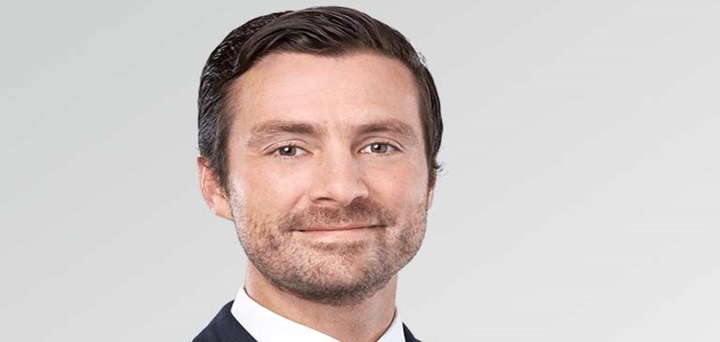Matthew Corbett, partner for Agriculture at Fiera Comox Partners sits down with Room151 to examine why the firm’s equity partnership model for agriculture offers investment opportunities for the LGPS.
 A big challenge for investors in conventional assets is that the negative correlation between bonds and equities no longer stands. To what extent can investing in agriculture offer portfolio diversification?
A big challenge for investors in conventional assets is that the negative correlation between bonds and equities no longer stands. To what extent can investing in agriculture offer portfolio diversification?
This is one of the primary benefits of investing in agriculture, you have a limited relationship with any public market asset class, whether it be stocks or bonds. It even provides additional diversification with other real assets. So beyond having a minimal correlation with public markets, it also has a minimal correlation with assets like real estate, infrastructure or even timberland.
For investors that have sophisticated portfolio allocations such as LGPS investors that include significant real asset exposure, they can still capture diversification benefits by being invested in agriculture.
Agriculture itself is often perceived as a risky asset class due to the volatility of international commodity markets and exposure to climate risks. How do you position your portfolio to protect against these challenges?
The primary mitigant to these risks is diversification. At the individual farm level there can be year-over-year volatility in cashflow but if you have a very broad basket of agricultural exposure that extends across multiple countries, sectors, regions and end markets, that diversification helps reduce the volatility around commodity prices and weather significantly. In fact, for a diversified portfolio of agriculture you tend to see a stable cash yield and total returns.
Also, keep in mind that the key value at risk is land and the actual value of that land is stable over time even through periods of volatility in commodity prices and weather. For a diversified basket of farmland, particularly high-quality farmland this will tend to be quite stable in value. The downside risk of a diversified portfolio of agriculture is quite limited.
Can you give some examples of countries or regions in your portfolio?
Yes, we are focused on the developed world. We think that agriculture is a very nascent asset class where we can capture very interesting risk-adjusted returns in the developed world and this is where we have always focused. Our primary regions are the US, Australia, New Zealand, Western Europe and Canada.
And you also diversify by crop?
Absolutely, that is critical for an institutional grade portfolio to be diversified across a range of row crops and permanent crops and protein. A lot of row crops tend to be nearly one to one correlated with each other so it is very important to be exposed to other crop types. For example, there is limited correlation between the prices for cherries, olive oil and wheat and from a diversification point of view, it is beneficial that these prices have a limited relationship with each other. Our fund is currently exposed to 15 different commodities, which is a very broad basket of food and fibre.
How do you source these farmers you invest with?
The sourcing mechanism for many of our partnerships is word of mouth through the farming community, farmers introducing us to farmers. The model that we offer to farmers is unique. We are not simply trying to buy their assets and rent them back. We’re not trying to do corporate farming where we take 100% control. We are really setting up true joint ventures with local top-tier farmers. Our investments are typically injections of capital into going concern farming businesses where the incumbent farmer is rolling their equity and continues to run the business on a day-to-day basis.
Farmers are very independent, entrepreneurial people and this is why the equity partnership model we use has worked so well. Farmers don’t want to be employees of a financial organisation; they want to be owners of the land they work every day.
With our model, they are not taking chips off the table, they are not being bought out, they continue to run the business on a day-to-day basis, they continue to be invested, the name and the face of the business does not change, but it is well positioned for growth. And that is the primary reason a lot of the farmers are partnering with us, we have built a lot of successful farming businesses alongside our partners. And word of mouth is very powerful in the farming community.
Why do you operate with an open-ended fund structure?
This goes hand in hand with our long-term mindset as investors. We have a single fund, it is an open-ended perpetual vehicle so we can raise capital and pace the intake with the deployment opportunities we see in front of us.
This allows us to have our investors committed and deployed in a relatively efficient timeframe. A lot of investors in the asset class are struggling to be left in commitment queues for years before their capital is deployed. Most of our investors are fully deployed within six to 12 months.
In addition, the asset class lends itself favourably to investors with a long-term mindset and the perpetual structure provides us with the runway to build scale and improve the underlying operations through capital development projects.
Also, open-ended structures align with the circumstances of some investors. We believe this is clearly the case for many LGPS investors. Contributions from employees and employers, scheme wide, are often not keeping pace with benefit payments and therefore there is an increasing need for LGPS Funds to utilise investment income to support the payment of benefits. An open-ended structure can provide reliable ongoing income and therefore is very well suited to assisting LGPS Funds to make the payments due to pensioners and other beneficiaries.
To what extent are you also investing in making the farms themselves sustainable?
More sustainable farming goes hand in hand with better risk adjusted investment returns.
Sustainability is a core focus, we are trying to drive a lot of efficiency projects across our farming projects making sure we are not wasting any resource we have access to, making sure we are reducing our environmental footprint where we can.
A lot of our capital development projects have a two-pronged benefit which should be a good sustainability outcome but also a good economic return.
In agriculture, many operators don’t have access to this technology and they don’t have access to the necessary capital. Since we do, we can manifest modern, sustainable farming practices. We can utilise the latest technology and support our high-quality farming partners to farm better.
What are some examples of that?
In our row-cropping operations, we are now mostly using camera sprayers, which is an implement that is less commonly used in agriculture because of its high upfront costs versus the traditional means of application. By employing camera sprayers, we incur a higher upfront cost but in return we can reduce our pesticide usage significantly. That has a significant environmental benefit as well as benefiting our operating expenditure.
By the end of the next decade, the world’s population is expected to hit 9bn, meanwhile climate change is already wreaking havoc on crops around the world. What could sustainable agriculture for the future look like?
Many of the solutions are already here, often they have already been here for decades. It is simply a matter of them being rolled out across a broader spectrum of agricultural production.
I have no concerns that the world’s farmers will continue to be able to produce more food over time when faced with that challenge. No doubt, climate change will make their job more difficult but if there is one thing that farmers have consistently shown, it is the ability to produce more food when they are demanded to. There are ample available means farmers can use to improve yields, reduce volatility and increase total production.
Farmers will be able to do that with the same agricultural footprint we have today, if not a smaller one but this will come down to costs.
As you increase the demands on farmland you can and will produce more food, but it will often come at a higher cost over time, the production of more food will require more investment.
—————
FREE weekly newsletters
Subscribe to Room151 Newsletters
Follow us on LinkedIn
Follow us here
Monthly Online Treasury Briefing
Sign up here with a .gov.uk email address
Room151 Webinars
Visit the Room151 channel












